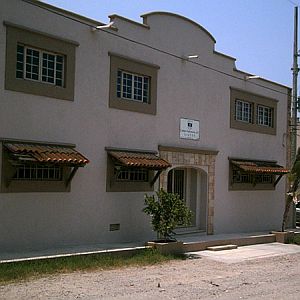Puerto Vallarta, Mexico - Making the decision to move to Mexico is a big one. Once youíre here youíll have more decisions to make regarding housing, health services and education. There are many educational options available in the greater Puerto Vallarta area. Whether you choose a public or private school, the decision should not be taken lightly.
When I was in Peace Corps training in Ecuador, the Cultural Trainer told us to remember one thing during our stay in Ecuador: Ecuadorians do not have the choices that you, as Americans, have. That simple statement stuck with me during my two years in Ecuador, and I still reflect on it here in Mexico.
You, as an expat, will not have the choices that you had in the States or Canada. When it comes to choosing a school for your children it is very important to remember that the schools simply are not the same here. Donít expect to find a school that is like a school back home. If you do that, you will be disappointed.
Public School
The Secretaria de Education Publica (SEP) has made a lot of progress in the last few years. They have improved text books which incorporate the latest teaching techniques. They have added computer classes in most schools and they are in the process of adding English classes.
All teachers in the public schools in Mexico must now have at least a Bachelorís degree in education and attend regular training courses. Class sizes are large, with as many as 60 students per class. Parents are expected to help with the maintenance of the school and also to provide supplies such as toilet paper and paint.
The school day at a public institution is short, about 4 hours. Most schools have two shifts, morning and afternoon. A public school would be a good option if you want your child to be immersed in the language and culture.
 |
| There are many private schools in Puerto Vallarta, Mexico. Some are bilingual, some are not. |
Private Schools
There are many private schools in Puerto Vallarta. Some are bilingual, Spanish-English and some are not. A few schools offer a third language, French or Mandarin Chinese. The prices vary greatly, from $200 USD to $800 USD a month. There are additional fees also, such as enrollment, services and materials, English books, uniforms and after-school programs. Some private schools offer a bus service at an additional cost.
One of the main differences between public and private schools is the class size. In a private school the groups are usually under 20 students and can be as low as 12. In some private schools they may reach 30.
Since Puerto Vallarta is a tourist town it is very important for children to learn English. You will find some private bilingual schools that have excellent English programs. They have native speaking teachers from the States or Canada, text books from the States, they even offer the students the opportunity to travel to the States or Canada during their vacations.
Of course, the quality of English programs varies also. In some of the less expensive schools the teachers are probably not native speakers and they might not offer all the subjects in English. However, private schools usually have more extra-curricular activities than public schools, like sports, music, art, drama, and martial arts.
No matter which you choose, all students wear uniforms, and all schools, public and private, use the same SEP-issued Spanish books.
 Mary Stehley has lived in Puerto Vallarta for 21 years. She has a Master of Arts in Teaching degree from the School for International Training in Brattleboro, Vermont. She has a ten-year old daughter, Reyna Isabel.
Mary Stehley has lived in Puerto Vallarta for 21 years. She has a Master of Arts in Teaching degree from the School for International Training in Brattleboro, Vermont. She has a ten-year old daughter, Reyna Isabel.


